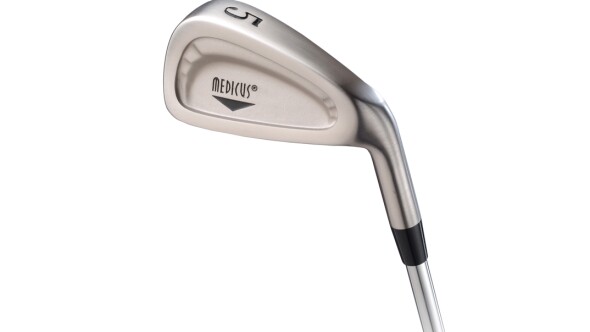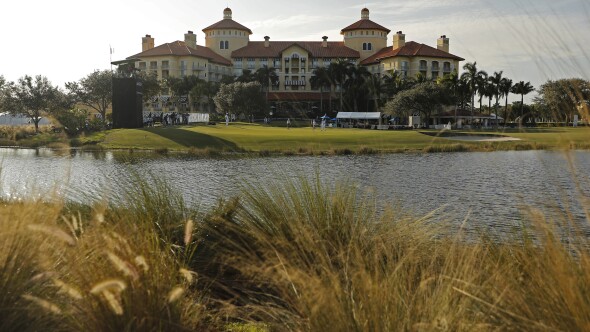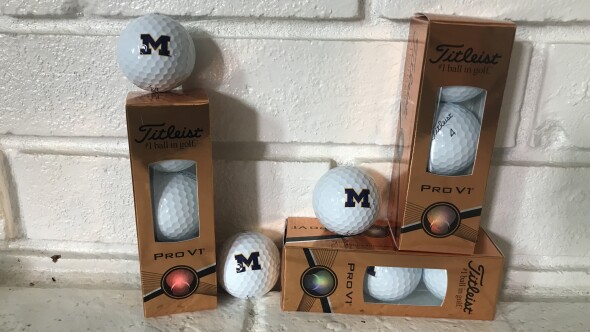What if a bucket-list golf destination could be built in your backyard? That's what Dave Pelz did when the NASA scientist-turned-short game guru created the ultimate golf oasis in his home outside of Austin, Texas.
The sensational end product was the result of two-plus years of trial-and-error by Pelz, leaving no stone unturned to uncover the most realistic and fun design for his backyard as scientifically possible.
The seed for the Pelz backyard was in many ways planted when he lived in the Washington D.C.-area and had to drive 45 minutes after work to his club just to hit balls or play a few holes before dark with his son, Eddie. Now living in the Texas Hill Country, by creating this backyard oasis, Pelz doesn't have to choose between spending time at home with the family and getting in meaningful practice.
"I enjoy golf more because I'm playing better," said Pelz, who says he never practices at his home club, instead only playing full rounds there on the weekend. "I don't feel guilty about not practicing.
"I really don't care how well I hit the ball, because hitting greens is not a big deal to me."
Say what?
Wealthy golfers have been building backyard golf setups on their estates for awhile now. In the most lavish cases, it's an entirely private 18 holes. Other setups, like Tiger Woods' 3.5 acres at his home in Jupiter Island, Fla., are comprised of uniquely designed greens for mid-irons and short game.
These examples that use grass turf and take up a lot of acres aren't very realistic for the vast majority of us, which is a big reason why indoor golf simulators — with five-figure price tags, not seven — have become a popular option in recent years.
But Pelz is famously known for his short-game obsession, which simply can't be simulated effectively indoors. So for him, and possibly you, the backyard playground is a no-brainer.
Can you build something like Pelz's setup in your backyard? Chances are, you don't have the cash or the vast acreage (Pelz also has a practice tee where he can bomb full drivers deep into his ranch land). But you can use certain elements and piggyback off his many years of research to build the most effective green possible.
The real genius of the Pelz backyard setup is that the golf is so harmoniously interwoven with everything else, so that when grandkids or friends are over, some could be hitting shots, others may be in the pool or tossing a football. Golf is a much easier sell when it quite literally takes zero effort to get a club in a kid's hand.
"In our own little way, we're trying to grow the game through easing access to the game," said Eddie Pelz, General Manager of Pelz's Synscapes, who performs both residential and commercial designs and installation.
Costs can vary greatly by need, but a general guide to install a SynLawn putting green is about $17-25 per square foot. Dave Pelz's SynLawn turf is a very durable nylon that comes with a 15-year warranty, but he expects his yard to last 20 years, and that's with what he estimates have been about 180,000 shots played on it in its first 6-plus years. As for upkeep, there isn't much. Depending on the amount of canopy you have in your yard, you'll have to blow leaves and trimmings off the surface. An optional, annual "power-brooming" service is available.
But wait, what if I want real grass? The simplest answer is that unless you plan on hiring a reliable maintenance person (and invest in the necessary equipment), there's no way you're going to be able to have the knowledge nor the time to keep up with the demands required to maintain healthy turf. Frankly, an industry-grade greens mower may very well cost you more than an elaborate synthetic turf setup.
How much space do you need? About the smallest installation that is common is a 15x15 space, and at $20/sq. foot that equates to a $4,500 cost.
Space requirements aside, the next challenge, as is the case with any major home addition, is to design and construct something that will last and be used. By looking at how Pelz built his backyard, we can learn a few dos and don'ts. For starters, you can tell that great lengths were made to hide any seams, which can really drag down authenticity, at least to the eye.
But it's how the ball behaves — roll quality and spin — that is the most important element to whether a golfer is actually going to use the thing for years to come. If a golfer doesn't get the sense the ball is rolling like the real course, there isn't going to be much sense of fulfillment in practice. During Pelz' research, he studied nylon material vs. polypropylene (commonly used for synthetic turf driving ranges) to see how the roll quality and how the ball reacted when it lands after a golf shot. He determined nylon greens are installed with less sand and more fibers, and when installed properly, will have a truer roll. It's also more durable and will have a much longer life expectancy.
In terms of green design, you may want to either go with something flat, or perhaps something that's a little more festive with big humps and slopes, like a Himalayas-style approach. Whatever you choose, the key number to keep in mind is 5% -- that's the grade of slope that becomes too severe for a golf ball to hold.
The Pelz backyard is also an example of design being set up to be both utilitarian (you can hit just about any short-game shot imaginable) but endlessly artistic and exciting. Using a variety of green sizes and shapes along with bunkers and water hazards, there are limitless shots to perfect. Many holes were built as replicas of some of the most famous par 3s in the game like Sawgrass and Augusta National, along with some Pelz originals, so it's a stimulating place to be. Pelz also recommends setting up two cups about 20 feet apart. That's the most common length of most golfers' first putt.
Multi-purpose, as with many things home-related, is essential. What we can learn from the Pelz backyard is that between the grill, the deck and the sound system (not to mention the views), is that this is a space that can be used with a golf club in-hand or not. It's just so tempting to want to hit shots out there.
One of many other sneaky features, Pelz designed the backyard with rain capture in mind, so he can live off his own water supply.
Other extras to consider with a backyard practice green:
Lighting: You can install lighting not only for the backyard, but also lighted cups for an added effect.
Sound: Installing an outdoor, WiFi-controlled sound system (or even voice-activated like the Amazon Echo or Google Home) will keep the backyard party going.
Bunkers: Bunkers are a useful add-on but there are a few things to know: first off, don't set it up so you're hitting shots into someone else's property (or windows), and be warned that wind can blow sand out of the bunker and onto the green, so there is some additional maintenance there.
Water features: The design of the Pelz backyard features a pool near the house that is great for the grandkids and additional water features that make for golf hazards. Using synthetic turf in the backyard helps reduce the amount of debris that gets into the pool, making cleanup easier.
Longer shots: Depending on the amount of space you have, you can install a small tee box however many yards away that you can as opposed to turfing the entire yard.
Shade: It's not fun hitting shots under the hot, Texas sun for hours. Pelz not only has a covered hitting area next to his house, but a tree that shades his driving range station.
Pets: Dogs can certainly run free on this turf. Nothing sticks or stains on the Synlawn nylon, and odor-absorbing crystals can also be added.
It can be a big investment, but the reward for properly designing and installing a backyard practice area is huge. I'm curious if you've ever visited a friend's backyard who had a worthwhile setup. Or, have you been to one that was a dud? Let us know on Twitter @golfadvisor.























I really like the information that you have shared here. I also want real grass and yes I will hire a reliable maintenance person to do this. I just want the best indoor putting green for my backyard and the ball should roll well else I will not feel the practice is fulfilling. I like to play the tournaments as well so I have the best <a href="https://golferfx.com/how-to-use-golf-alignment-sticks/">golf alignment sticks</a>, and I want to use it on good quality grass.